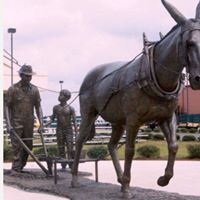Which country features a character named 'Black Peter' at Christmas?
Every culture has holiday traditions that incorporate the spirit of the season with the unique flair that is distinctive to one people.
St. Nicholas Eve is celebrated annually on December 5 and is considered the eve of St. Nicholas' birthday. 'Sinterklaas' looks quite different from the jolly man depicted in western culture, and the Dutch consider him to be a different person than Santa Claus.
He is tall and slender, and he wears dark red robes and a hat similar to a bishop's attire. In many traditional images, he is elderly and has a long white beard.
He is accompanied by his assistant 'Black Peter' ('Zwarte Piet'), who is dressed in 16th century Spanish attire to symbolize Spain's dominance over the Netherlands during that era.
'Black Peter' first appeared in an 1850 book by schoolteacher Jan Schenkman. Traditionally, 'Zwarte Piet' is black because he is a Moor from Spain. Those portraying 'Zwarte Piet' usually put on blackface (to resemble soot) and colourful Renaissance attire in addition to curly wigs and bright red lipstick.
'Black Peter' rides a mule, a stark contrast to the more joyous colors of 'Sinterklaas's' red robes and white horse. Black Peters goes down each home's chimney to leave gifts for the children. In some legends he is also said to punish disobedient children.
The tradition has led to controversy, with the United Nations condemning it as “a throwback to slavery”, although its supporters insist that it’s a harmless Christmas tradition.
More Info:
www.theweek.co.uk







